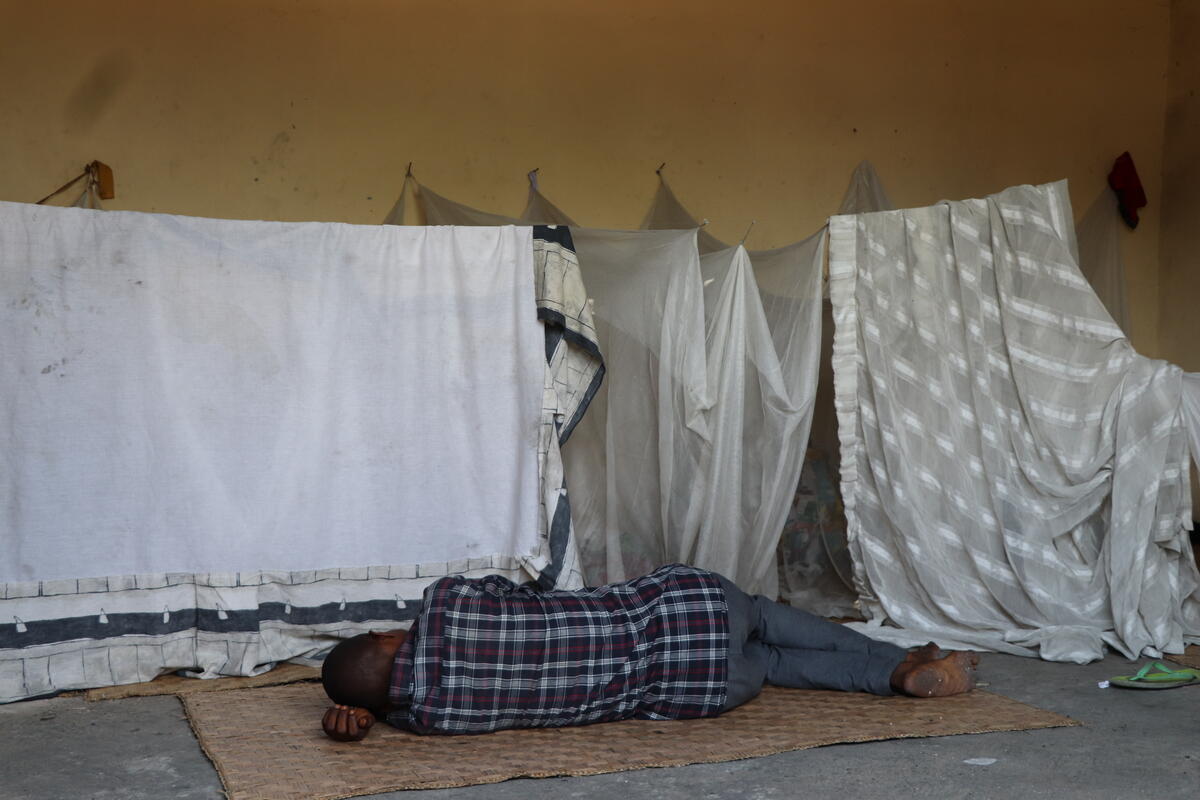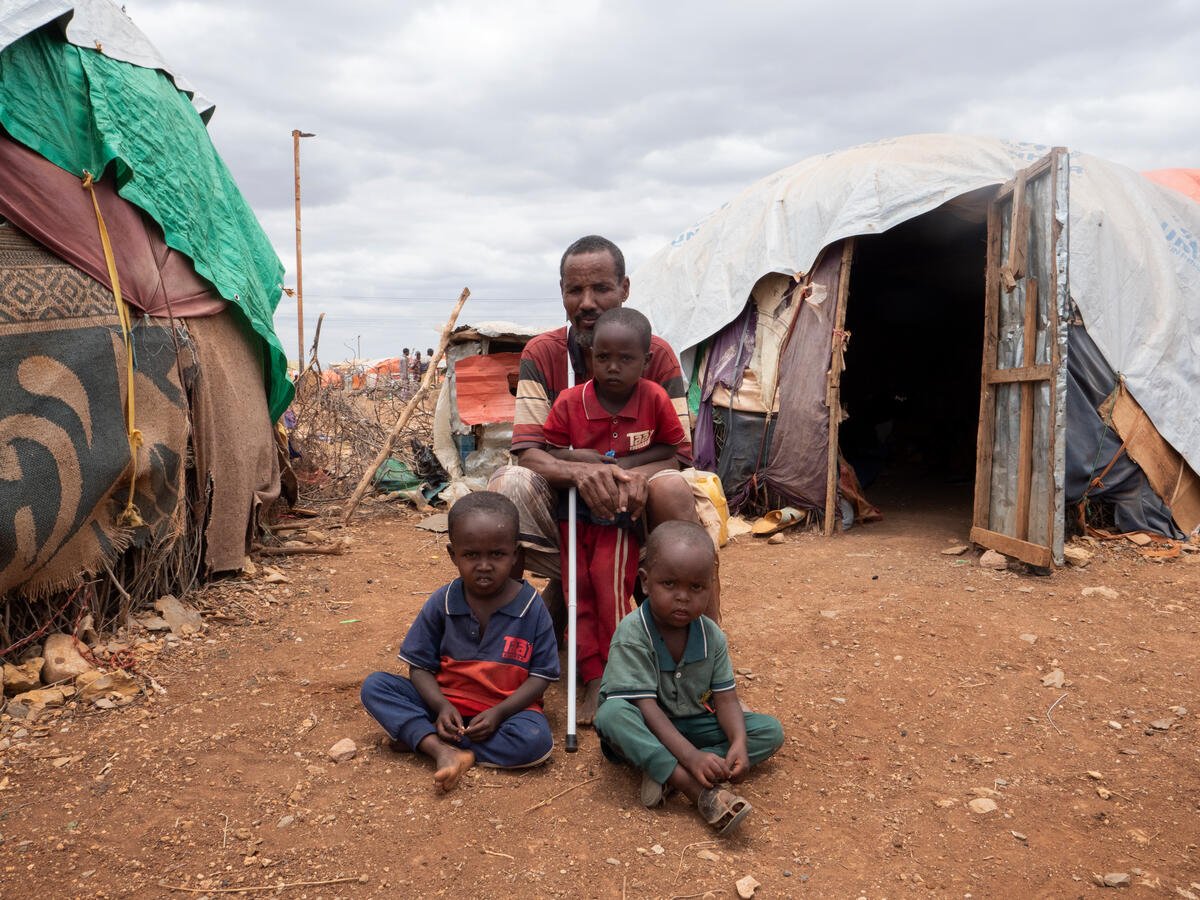UNHCR's new protection chief visits Colombian IDPs
UNHCR's new protection chief visits Colombian IDPs

GENEVA, Feb 3 (UNHCR) - UNHCR's Assistant High Commissioner for Protection Erika Feller is in Latin America this week on her first mission since being appointed to the newly created post in January.
Feller, who oversees UNHCR's protection work for more than 19 million refugees and other people of concern in the world, started her visit in Colombia. She held a series of meetings with high-level officials, including the Vice-Minister of Foreign Affairs, the President of the Constitutional Court, the Ombudsman and the Mayor of Bogota. She also held talks with representatives of associations working on behalf of Colombia's internally displaced persons (IDPs) and other UNHCR partners.
After more than 40 years of armed conflict, Colombia counts over two million internally displaced persons (IDPs) and the numbers keep increasing. Preliminary reports from the government indicate that in 2005 alone there were over 131,000 new cases of forced displacement. Non-governmental organisations put the figure much higher.
The vast majority of displaced people have fled their regions of origin as a result of the armed conflict. UNHCR in Colombia works to protect the rights of displaced people in cooperation with state institutions, organisations helping IDPs, and other partners.
"Our protection activities in Colombia are a fine illustration of UNHCR's ability to transfer the knowledge and experience it has developed over more than 50 years of working for refugees to internally displaced persons," the new Assistant High Commissioner for Protection said.
"At a time when the organisation is taking on the challenge of IDPs' protection in several other countries, our work in Colombia provides us with a blueprint for what might be achieved, particularly in the area of helping communities to help themselves."
During her stay in Colombia, Feller travelled to the western region of Chocó, where Afro-Colombian and indigenous communities are at high risk of forced displacement because of the heavy presence of irregular armed groups in the area.
Feller visited the river community of Tangui, where she heard from local people of the difficulties of living in a conflict zone. She was briefed by community leaders about the forms of pressure exercised by the armed groups on the local population, ranging from economic blockades to targeted killings, beatings, threats and intimidation.
In Bogota, Feller visited projects for the displaced living in extremely difficult circumstances on the outskirts of the capital. The vast majority of Colombia's IDPs end up living in economically depressed areas in and around large cities all around the country.
In Altos de Cazucá, the Bogota suburb that Feller visited, living conditions are extremely poor. Makeshift housing, high unemployment, and poverty are the norm. To make matters worse, displaced people find that the very armed groups they had fled to escape are once again wreaking havoc on their lives. Armed groups have imposed rules over personal behaviour, targeting, among others, women in short dresses and men with long hair. There have been numerous reports of youngsters being murdered in the area by members of irregular armed groups.
"The challenges are not to be underestimated," Feller said. "Physical security, particularly for women, youth and IDPs community leaders is a serious concern. There are many positive programmes to address the socio-economic needs of the affected people. Restitution of their property and reparation for losses will be quite a challenge at the appropriate time."
On Wednesday, Feller travelled to neighbouring Ecuador, where an estimated quarter of a million Colombians are of concern to UNHCR. She met with Colombian refugees living along Ecuador's northern border and is now in Quito attending a two-day meeting on resettlement in Latin America. Resettlement is one of the key solutions identified in the Mexico Plan of Action.
"The resettlement of Colombian refugees is a concrete example of solidarity between states within the Latin American region as outlined in the Mexico Plan of Action," said Philippe Lavanchy, director of UNHCR's bureau for the Americas. "While the Plan promotes South-South cooperation and focuses on the region's capacity to find solutions and share responsibility, North-South solidarity remains key. In this respect, the participation at this meeting of representatives from the U.S., Canada, Sweden and Norway is especially welcome."
Latin American governments meeting in Mexico in late 2004, adopted the Mexico Plan of Action to give a new impetus to refugee protection in the region. The Plan focuses on solidarity between states and effective partnerships to help refugee and IDPs on the sub-continent. The resettlement part of the Plan was designed to help countries such as Ecuador and Venezuela, where many Colombians take refuge, by offering resettlement places in other Latin American nations.








